The Hidden Factor of Low Risk Raw Milk
- Hilary Elmer
- Aug 22
- 6 min read
I love raw milk.
Raw milk is nature's perfect food. I have seen it heal people who were chronically ill. I feel so good when I drink it.
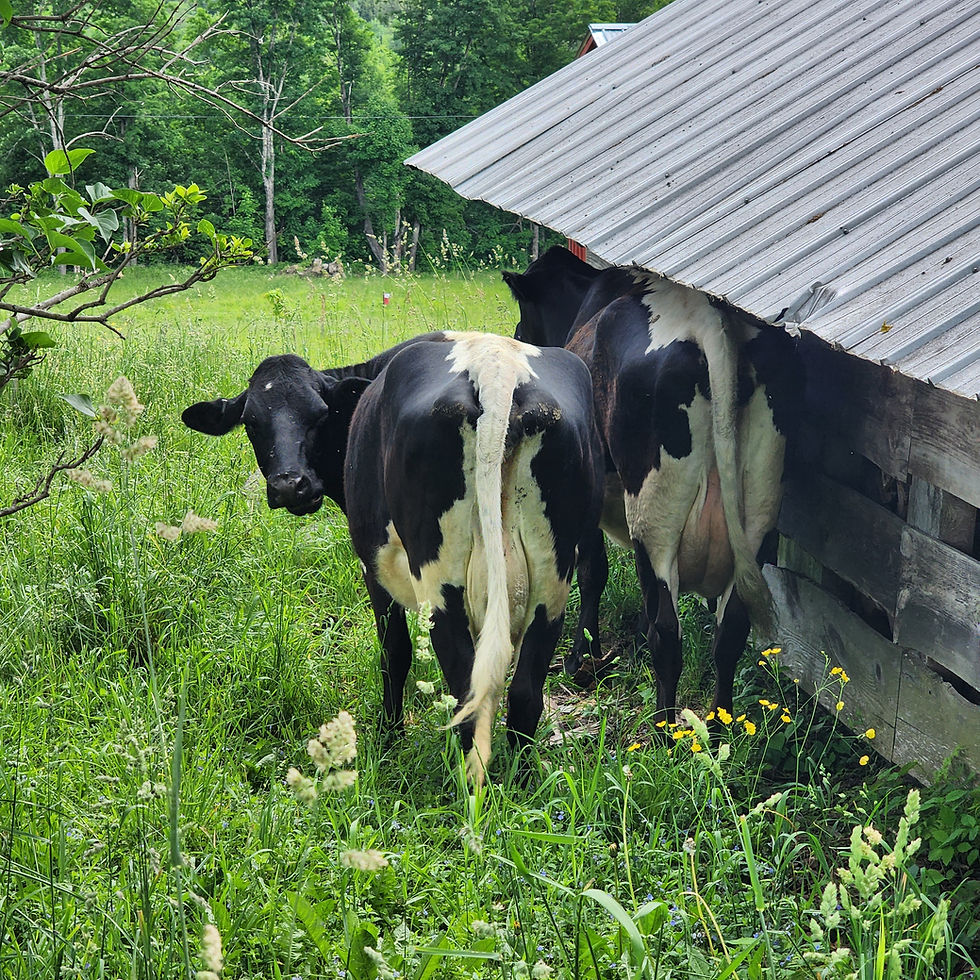
But I don't love all raw milk farmers.
I associate with a lot of raw milk farmers, both in person and online. Many of them, thankfully, take raw milk safety (and the sanitation and good practices that go with it) seriously.
But it's not uncommon to find someone with a blase' attitude. I hear farmers say things like:
"it hasn't killed me yet"
"people have been drinking raw milk for thousands of years without modern sanitation"
"raw milk has pathogen inhibitors, it CAN'T make you sick"
"testing gives a false sense of security"
or the cringiest... "over sanitizing is bad because you want good bacteria around so that bad bacteria don't colonize"
Even lettuce might have salmonella or E. coli, there is no raw food that is completely risk free. But we can minimize that risk.
Consumers wonder if raw milk is safe or not. The answer is, it depends on the farmer's attitude. If you buy raw milk, make sure that the farmer has the attitude that it is their responsibility to sell the cleanest, lowest risk product possible.
Things to Ask Your Farmer
You might feel shy asking pointed questions about a topic that you don't know very much about to someone who is (supposedly) an expert.
The fact is, any farmer who bends over backwards to do a really good job with raw milk LOVES being asked about their hygiene and sanitation. Nothing would make me happier than to be asked to show my test results, because they are empirical proof that I do a good job!
A farmer who gets defensive or dismissive about hygiene is a farmer that you don't want to buy from. That attitude betrays poor practices.
Ask your farmer:
Do you feel that your raw milk is safe?
They will probably say yes, but pay attention to what else they say. The only acceptable attitude is that it is the farmer's obligation to produce the cleanest, lowest risk milk by following strict guidelines.
(for large farms) Is your milk intended to be consumed raw, or is it intended to get pasteurized?
Most big farms ship their milk to a plant where it gets pasteurized and made into various dairy products. Because their main customer will pasteurize it, they have no incentive to keep it really clean.
Factors like:
too many cows to spend sufficient time on each one to really get their teats clean
long pipelines that are nearly impossible to clean between milkings, particularly up north where cold winters make cleaning solution too cold to be effective in the winter
and numerous minimum wage farm employees who do the job as fast as possible, rather than as well as possible,
make milk from large farms unsafe.
(for small farms) Do you hand milk or machine milk?

Many small raw milk producers choose to hand milk into an open bucket rather than using a bucket milking machine. Hand milking is cheaper and easier, but it does not produce a better product.
Hand milking is unacceptable for two reasons:
a lot of dirt falls from the cow into the open bucket
it takes so long to hand milk that the milk doesn't get chilled fast enough
How do you clean your equipment?
Many large farms barely clean equipment at all. The claws and inflations are splattered with manure and milk residue. Their long pipelines don't get clean, resulting in milk stone and biofilm that harbor pathogens.
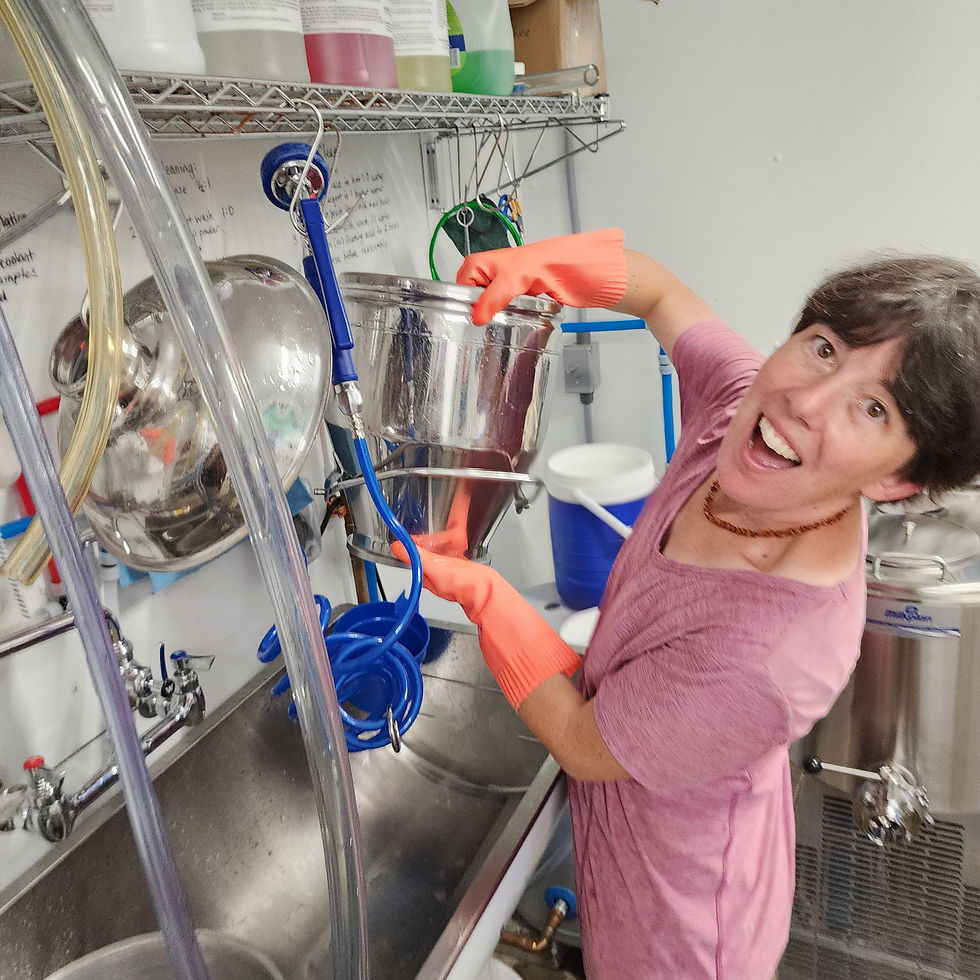
Small producers do a good job cleaning equipment IF they have the attitude that thorough cleaning is important. The best way to clean a milking machine claw and inflations is to use an automatic claw washer. If they just run cleaning solution through it a few times by hand, there will be milk residue inside the equipment. They should also scrub the lid and bucket after each milking.
Manure or milk residue on any equipment is unacceptable for raw milk safety.
When you do deep cleans, do you find build up / milk stone inside?
If they never do deep cleans where they break down the claw into individual pieces, then they probably have problems that they are not aware of.
Hopefully they do deep cleans periodically. If the farmer says that there is milk residue in the claw that they remove during deep cleans, that indicates that they are not doing a sufficient job of washing the claw every day.
When I deep clean, I find zero residue on the parts of my claw.
What is your process for cleaning cow teats?

Cows are dirty. Even cows on grassy green pastures lay in mud and manure, and their udders are underneath them, touching the ground every time the cow lays down.
Unacceptable answers include:
I dry brush and don't use any sort of rags, wipes, or teat dip
I dip in teat dip (and do nothing else)
nothing
The correct answer is that the farmer gets the teats squeaky clean by using as many wash cloths / wipes as needed, spending as long as needed, and finishing with a teat dip.
It is also necessary to discard the first few squirts of milk from each teat.
How quickly does your milk chill to below 40F?
If a farm has a bulk tank, as long as the milk gets poured into it quickly, the milk gets cold fast.
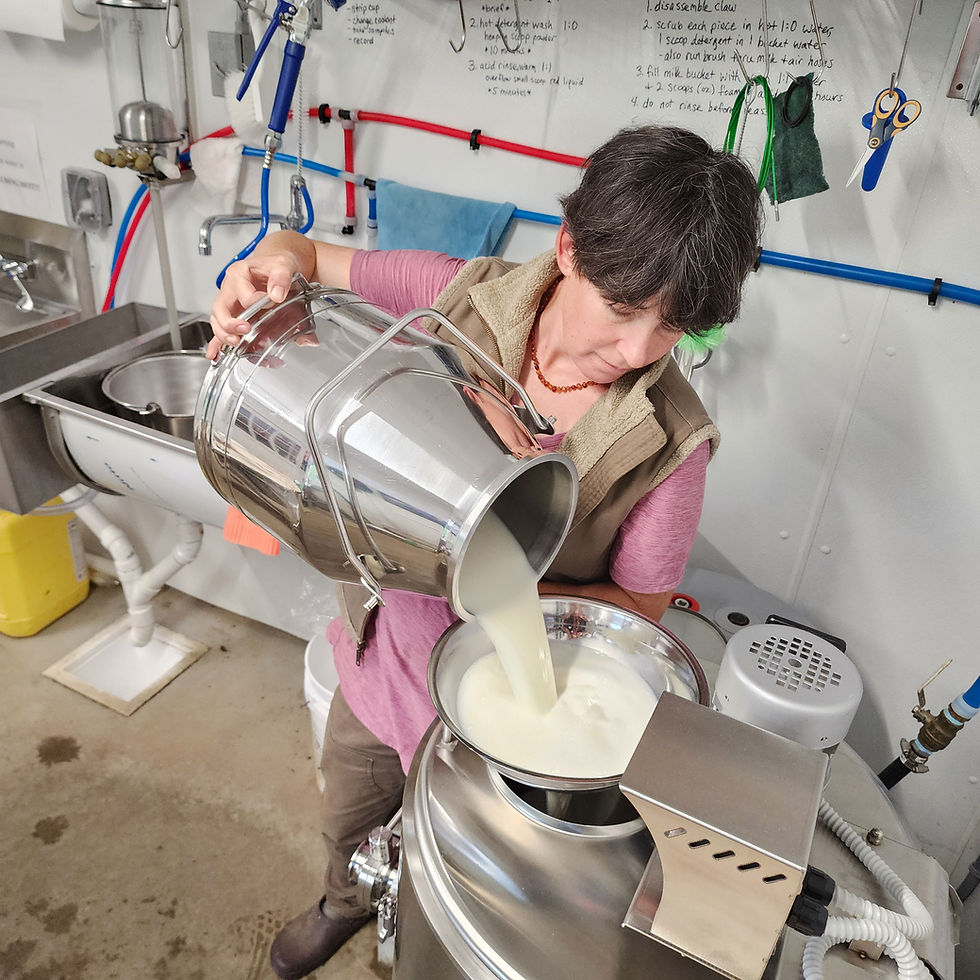
Small farms might not have a bullk tank. In that case, if all they do is put jars of warm milk into the fridge, it takes 11 hours for the milk to reach a proper chilled temperature. Bacteria, including pathogens, can multiply a LOT in 11 hours.
Even placing warm jars in the freezer takes several hours to chill.
The way that farmers without a bulk tank need to chill milk is by submerging jars of warm milk in an ice bath, or better yet, in a brine bath at below freezing temps. These two methods result in milk chilling in less than an hour, which is what you want.
What is your milk's shelf life?
If done right, raw milk lasts for a good two weeks or more.
If milk lasts less than a week before getting funky, it's because at least one of the points above is being done wrong.
What are your milk test results?
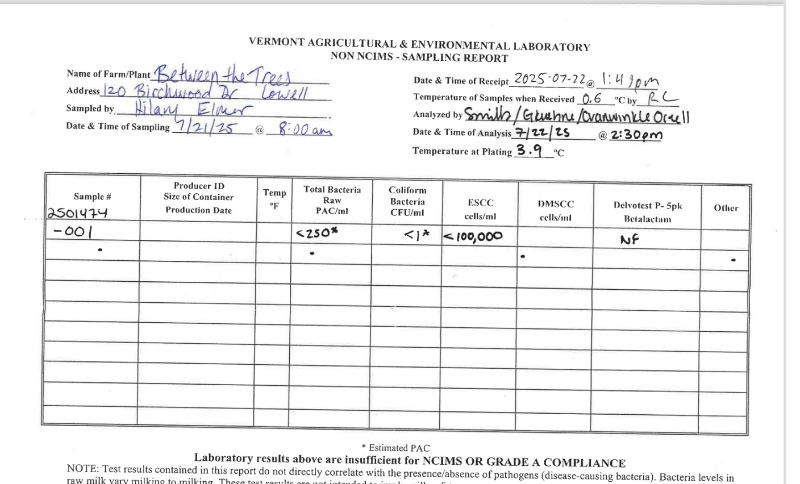
I used to say that it's not really necessary for farmers to test their milk.
The longer I do this, the more I'm convinced that testing is necessary. I have learned to value my twice a month test results. Almost always, I get the very best scores possible. But if the numbers ever start creeping up, it alerts me that something has changed that I was not aware of and then I can fix it.
What should test results be? There will be some variation in what factors get tested depending on the lab that does the testing, but usually you will see coliforms (CFU), total bacteria (SPC or PAC), and somatic cell count (SCC).
Coliforms are bacteria from poop/manure, and they can be pathogenic. Milk is considered legal in the state of Vermont if 1 mL has <10 coliforms. My milk tests consistently show that I have <1 coliform, which means that they did not find any in my sample.
Total bacteria counts are all the other bacteria that might inhabit milk, both beneficial and otherwise. In the state of Vermont, raw milk can legally have up to 15,000 total bacteria per mL. My milk tests consistenly show <250, which is the lowest number possible.
Somatic cell count indicates udder health. Vermont law states that there can be up to 225,000 SCC per mL. My milk consistently gets <100,000 SCC.
Look for a farmer who gets consistently low numbers in their milk tests, and who take it seriously if their numbers start to creep up.
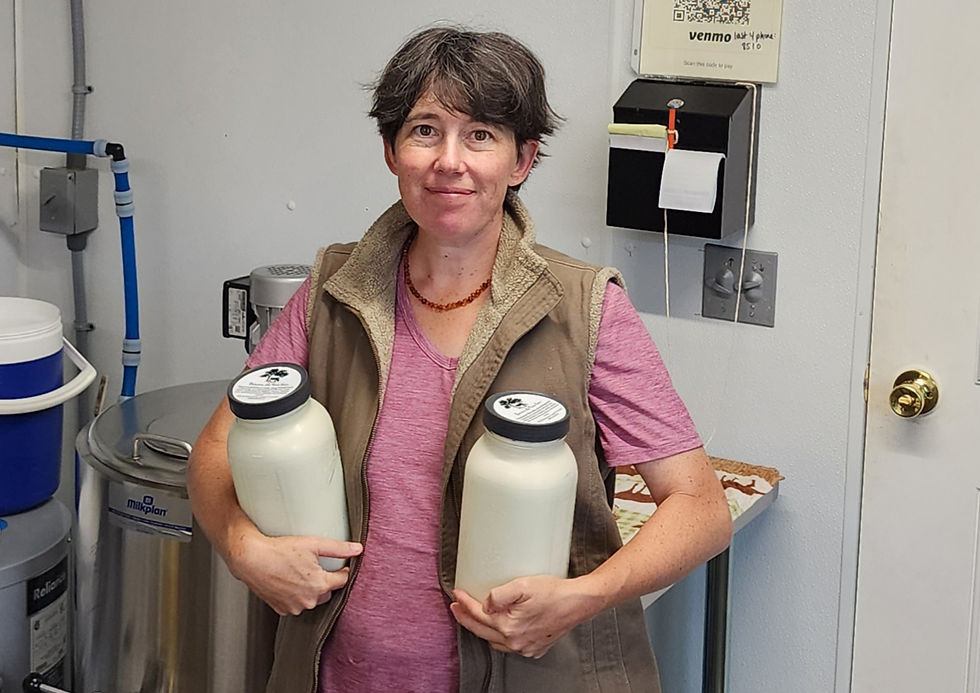
Low risk raw milk is what every raw milk farmer should be striving to produce. It is not out of reach, but it does take effort.
If a farmer has the attitude that it's not possible or necessary to produce clean, low risk raw milk, then find a farmer who does.
The hidden factor in determining raw milk safety is the ATTITUDE of the farmer.






Google isn’t picking up many of your pages, fewer people can find you.
Hi, it’s Joseph, a search engine algorithm specialist for Wix sites. I ran a quick scan and found indexing gaps, missing schema, and limited Google visibility. If left unresolved, these can hurt your rankings and make it harder for customers to discover you.
I’ve prepared a short, free audit report showing exactly what’s happening and how to fix it.
Would you like me to send it over?
Thanks,
Joseph